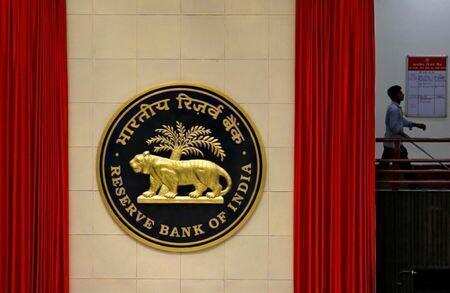RBI may deflate hype around reverse repo rate hike: SBI report
[ad_1]
Read More/Less
The Reserve Bank of India (RBI) may deflate the hype around reverse repo hike in the monetary policy by explaining the virtues of using reverse repo change as a pure liquidity tool and not a rate tool, according to State Bank of India’s economic research report “Ecowrap”.
It emphasised that delaying normalisation measures is prudent in the current situation which would also give time for economic recovery to strengthen further.
“We believe the talks of a reverse repo rate hike in the Monetary Policy Committee (MPC) meeting may be premature as the RBI has been largely able to narrow the corridor without the noise of rate hikes and ensuing market cacophony,” said Soumya Kanti Ghosh, Group Chief Economic Advisor, SBI.
Reverse repo rate is the interest rate that banks earn for parking short-term surplus liquidity with RBI.
Section 45Z (3) of the amended RBI Act of 2016 clearly states that, “The Monetary Policy Committee shall determine the policy rate required to achieve the inflation target”.
Ghosh emphasised that nowhere in the MPC’s mandate is there any reference to its role in liquidity management, which remains internal to the functioning of the Bank consistent with its policy stance. Thus, the RBI is not obliged to act on reverse repo rate only in MPC.
Unconventional tool
Also, change in reverse repo rate is an unconventional policy tool that the RBI has effectively deployed during crisis when it moved to a floor instead of the corridor.
In this regard, the report made a reference to Goodhart’s (2010) observations that the width of the policy corridor acts as an independent instrument for the central bank in a crisis and an asymmetric corridor is a logical outcome.
According to SBI’s economic research department, the central bank can (for whatsoever reason) supply any amount of additional liquidity without pushing short-term money market rates below the key policy rate.
“Thus, the interest rate can be set to achieve monetary goals, while the amount of liquidity in the banking system can play the role of financial market stabilisation. Since the pandemic, the RBI has done exactly this balancing act, and the pandemic is not yet over!” Ghosh said.
Referring to the US Fed indicating accelerating the bond tapering program, thereby ending it earlier than anticipated, the report observed that the rate hikes are also in offing sooner than expected as inflation is no longer considered as transitory.
“Unless Omicron proves more fatal than Delta variant, this in turn would imply strengthening of the dollar and depreciation pressures for the rupee. Thus RBI would have to look for multiple objectives,” the report said.
Ecowrap noted that the forthcoming monetary policy comes against the backdrop of the global scare of Omicron, that we are still trying to unravel.
However, the good thing is India has now vaccinated 125 crore people and this might have given the country better preparation for the future as the gap between the first and second wave was only 2 months.
“…The pandemic has also worked its way through the population resulting in larger herd immunity…” the report said.
Calibrated progress
Ghosh noted that the RBI has made a calibrated progress towards liquidity normalisation since the October policy with amount parked in overnight fixed reverse repo declining to ₹2.6 lakh crore from ₹3.4 lakh crore in pre-October policy
The lower increase in currency in circulation as more people are now using digital modes of payments has also contributed to the build-up of the surplus liquidity.
The report said the RBI has also largely achieved its objective of pushing up short term rates with 3 month T-Bill rate which was below reverse repo for major part of August now at 3.52 per cent, factoring in the impact of variable reverse repo rate. Similarly, 6 month and 1-year T-Bill rates have shifted upwards by 20-30 basis points since last MPC.
[ad_2]
